Slaughter 4520 Operation And Service Manual
- Category
- Measuring, testing & control
- Type
- Operation And Service Manual
This manual is also suitable for

Model 4320, 4520
V2.00
MODEL 4320 (AC/DC HIPOT WITH IR AND GROUND BOND TESTERS)
MODEL 4520 (500VA AC/DC HIPOT WITH IR AND GROUND BOND TESTERS)
Item 99-10319-01
Printed October 30th, 2014

DECLARATION OF CONFORMITY
Manufacturer: Slaughter Company, Inc.
Address: 28105 N. Keith Drive
Lake Forest, IL 60045
USA
Product Name: 4320 Electrical Safety Compliance
Analyzer
Model Number: 4320
Conforms to the following Standards:
Safety: UL 61010-1:2012
CAN/CSA-C22.2 NO. 61010-1-12
EN 61010-1:2010, EN 61010-2-030:2010, EN 61010-031:2002+A1
IEC 61010-1:2010, IEC 61010-2-030:2010, IEC 61010-31:2002+A1
EMC: EN 61326-1:2006
(EN 55011:1998/A2:2002 Class A,
EN 61000-3-2:2006, EN 61000-3-3:1995/ A1:2001/A2:2005
EN 61000-4-2:1995/A2:2000, EN 61000-4-3:2002,
EN 61000-4-4:2004, EN 61000-4-5:1995/A1:2000,
EN 61000-4-6:2003, EN 61000-4-8:1993/A1:2000,
EN 61000-4-11:2004)
Supplementary Information
The product herewith complies with the requirements of the Low Voltage Directive 2006/95/EC and the EMC Directive
2004/108/EC.
Last two digits of the year the CE mark was first affixed: 05
The technical file and other documentation are on file with Associated Research, Inc.
______________________________
Joseph Guerriero
President
Slaughter Company, Inc.
Lake Forest, Illinois USA
October 2014

DECLARATION OF CONFORMITY
Manufacturer: Slaughter Company, Inc.
Address: 28105 N. Keith Drive
Lake Forest, IL 60045
USA
Product Name: 4520 Electrical Safety Compliance
Analyzer
Model Number: 4520
Conforms to the following Standards:
Safety: EN 61010-1:2010
EN 61010-2-030:2010, EN 61010-031:2002+A1
EMC: EN 61326:2006 Class A,
EN 61000-3-3:2008
EN 61326-1:2006 (Industrial Locations)
EN 61000-4-2:2008,
EN 61000-4-3:2006+A1:2007+A2:2010,
EN 61000-4-4:2004+A1:2010, EN 61000-4-5:2005,
EN 61000-4-6:2008, EN 61000-4-8:2009,
EN 61000-4-11:2004
Supplementary Information
The product herewith complies with the requirements of the Low Voltage Directive 2006/95/EC and the EMC Directive
2004/108/EC.
Last two digits of the year the CE mark was first affixed: 12
The technical file and other documentation are on file with Associated Research, Inc.
______________________________
Joseph Guerriero
President
Slaughter Company, Inc.
Lake Forest, Illinois USA
October 2014

Warranty Policy
Slaughter Company, certifies that the tester listed in this manual meets or exceeds published manufacturing
specifications. This tester was calibrated using standards that are traceable to the National Institute of
Standards and Technology (NIST).
Your new tester is warranted to be free from defects in workmanship and material for a period of (1) year
from date of shipment.
Slaughter Company recommends that your tester be calibrated on a twelve-month cycle. A return material
authorization (RMA) must be obtained from Slaughter Company. Please contact our Customer Support Center
at 1-847-932-3662 to obtain an RMA number. Damages sustained as a result of improper packaging will not be
honored. Transportation costs for the return of the tester for warranty service must be prepaid by the
customer. Slaughter Company will assume the return freight costs when returning the tester to the customer.
The return method will be at the discretion of Slaughter Company.
Except as provided herein, Slaughter Company makes no warranties to the purchaser of this tester and all
other warranties, express or implied (including, without limitation, merchantability or fitness for a particular
purpose) are hereby excluded, disclaimed and waived.
Any non-authorized modifications, tampering or physical damage will void your warranty. Elimination of any
connections in the earth grounding system or bypassing any safety systems will void this warranty. This
warranty does not cover accessories not of Slaughter Company manufacture. Parts used must be parts that
are recommended by Slaughter Company as an acceptable specified part. Use of non-authorized parts in the
repair of this tester will void the warranty.

i
TABLE OF CONTENTS
SAFETY PRECAUTIONS REQUIRED FOR HIGH VOLTAGE TESTING! ....................................1
FRONT PANEL CONTROLS....................................................................................................2
4320 REAR PANEL CONTROLS .............................................................................................4
4520 REAR PANEL CONTROLS .............................................................................................5
SETUP INSTRUCTIONS FOR MODEL 4320/4520 .................................................................6
POWER-UP SEQUENCE: .......................................................................................................6
GETTING TO KNOW YOUR TESTER: ............................................................................................8
1. WORKING WITH MEMORIES ..........................................................................................8
2. PERFORM TEST SCREEN .................................................................................................8
3. SELECTING MEMORY AND STEP LOCATIONS ....................................................................10
4. SETTING AN AC HIPOT TEST .........................................................................................11
5. SETTING A DC HIPOT TEST...........................................................................................12
6. SETTING AN IR TEST ...................................................................................................13
7. SETTING A GND BOND TEST ........................................................................................14
SYSTEM PARAMETER DESCRIPTIONS ........................................................................................15
SETTING SYSTEM PARAMETERS ...............................................................................................16
USING THE DISPLAY ..............................................................................................................17
TEST MODE DISPLAYS ...........................................................................................................17
FAILURE MODE DISPLAYS ......................................................................................................18
ERROR MESSAGES................................................................................................................20
REVIEWING TEST RESULTS FOR MULTISTEP SEQUENCES ...............................................................20
USING THE REMOTE I/O: ...................................................................................................21
SIGNALS ON REMOTE I/O ......................................................................................................22
USING THE TESTER ACCESSORIES: ....................................................................................24
USING THE TEST LEADS .........................................................................................................24
USING THE ADAPTER BOX ......................................................................................................25
APPENDIX A - INSTALLATION AND TEST OPERATOR INFORMATION ..............................26
INSTALLATION .....................................................................................................................26
1. UNPACKING AND INSPECTION .......................................................................................26
2. SAFE LIFTING AND CARRYING INSTRUCTIONS ...................................................................26
3. CONTENTS OF THE CARTON ..........................................................................................27
4. PREPARATION FOR USE ...............................................................................................27
5. POWER CABLE ...........................................................................................................28
OPERATING ENVIRONMENT ...................................................................................................28
STORAGE AND SHIPMENT ......................................................................................................28
PACKAGING ........................................................................................................................29
TEST OPERATOR AND SAFETY CONSIDERATIONS ............................................................30
1. QUALIFICATIONS ........................................................................................................30
2. SAFETY PROCEDURES ..................................................................................................30
3. DRESS ......................................................................................................................30
4. MEDICAL RESTRICTIONS ..............................................................................................30
5. TEST PROCEDURES .....................................................................................................30
6. TEST STATION ...........................................................................................................31
APPENDIX B - 4000 SERIES TESTER SPECIFICATIONS ........................................................33
APPENDIX C - 4320/4520 OPTIONS ..................................................................................39

ii
APPENDIX D - REMOTE BUS INTERFACE: RS-232 .............................................................41
APPENDIX E - REPLACEMENT PARTS LIST - MODEL 4320/4520 .......................................50
APPENDIX F - SERVICE AND MAINTENANCE ....................................................................52
APPENDIX G – CALIBRATION PROCEDURE .......................................................................53

1
SAFETY PRECAUTIONS REQUIRED FOR HIGH VOLTAGE TESTING!
GENERAL:
This product and its related documentation must be reviewed for familiarization with safety markings and
instructions before operation. This product is a Safety Class I tester (provided with a protective earth
terminal).
Before applying power verify that the tester is set to the correct line voltage (115 or 230) and the correct fuse
is installed.
INSTRUCTION MANUAL SYMBOL. PLEASE REFER TO THE INSTRUCTION MANUAL FOR SPECIFIC
WARNING OR CAUTION INFORMATION TO AVOID PERSONAL INJURY OR DAMAGE TO THE
PRODUCT.
INDICATES HAZARDOUS VOLTAGES MAY BE PRESENT.
CHASSIS GROUND SYMBOL.
CALLS ATTENTION TO A PROCEDURE, PRACTICE, OR CONDITION, THAT COULD
POSSIBLY CAUSE BODILY INJURY OR DEATH.
CALLS ATTENTION TO A PROCEDURE, PRACTICE, OR CONDITION, THAT COULD
CAUSE DAMAGE TO EQUIPMENT OR PERMANENT LOSS OF DATA.
A HIPOT PRODUCES VOLTAGES AND CURRENTS WHICH CAN CAUSE HARMFUL OR
FATAL ELECTRIC SHOCK. TO PREVENT ACCIDENTAL INJURY OR DEATH, THESE SAFETY
PROCEDURES MUST BE STRICTLY OBSERVED WHEN HANDLING AND USING THE TEST
TESTER.
CAUTION
WARNING
WARNING

2
Front Panel Controls
1. RESET BUTTON: This is a momentary contact switch used to reset the tester. If an out-of-range reading is
detected during a test, the red failure lamp within the button will light. To reset the system for the next
test, press and release this button. This button may also be used to abort a test in progress.
2. TEST BUTTON: This is a momentary contact switch used to start a test. Press the green button to turn on
the high voltage output when in test mode. The indicator lamp within the button will light when test
expires with pass condition.
3. LCD DISPLAY: The Liquid Crystal Display is the main readout for the operator and programmer of the test
settings and test results.
4. CURRENT OUTPUT JACK: Use this jack for the connection of the detachable 5-foot (1.52 m) red high
current test lead or adapter box. This jack is used when performing a Ground Bond test. Please refer
section E. Adapter Box connection for details on connecting the adapter box between the tester and the
device under test.
5. POWER SWITCH: Rocker-style switch with international ON ( ) and OFF (0) markings.
6. SET KEY: Use this key to advance forward through the setup menus.
7. DOWN ARROW (): Use this key to decrement numeric values in the setup mode. This key also used to
toggle ON/OFF functions. Also may be used to decrease output voltage during a test in 10-volt increments.
UP ARROW (): Use this key to increment numeric values in the setup mode. This key also used to toggle
ON/OFF functions. Also may be used to increase output voltage during a test in 10-volt increments.

3
Front Panel Controls
8. EXIT KEY: Use this key to enter the test mode screen to initiate a test. Also use this key to enter the
System menu parameters and to exit from the System menu.
9. HIGH VOLTAGE OUTPUT JACK: For the connection of the detachable 6-foot (1.8 m) red high voltage test
lead. The silicone rubber insulation is flexible for easy handling and is rated at 30KVDC. The jack is
recessed for safety when this lead is not being used.
10. HIGH VOLTAGE ARROW (LED INDICATOR): This indicator flashes to warn the operator that high voltage is
present at the high voltage output terminal.
11. RETURN OUTPUT JACK: For the connection of the detachable 5 foot (1.52 m) black return test lead or
three-prong receptacle adapter box. This jack is always used when performing a test. Please refer section
E. Adapter Box connection for details on connecting the adapter box between the tester and the device
under test.

4
4320 Rear Panel Controls
1. POSITION FOR OPTIONAL REMOTE OUTPUT JACKS: Please refer section Optional Rear Panel Controls for
details.
2. FUSE RECEPTACLE: To change the fuse unplug the power (mains) cord and turn the fuse cap counter
clockwise to remove the fuse.
3. INPUT POWER RECEPTACLE: Standard IEC 320 connector for connection to a standard NEMA style line
power (mains) cord.
4. INPUT POWER SWITCH: Line voltage selection is set by the position of the switch. In the left position, it is
set for 115-volt operation, in the right position it is set for 230-volt operation.
5. THERMAL FAN: To cool the tester.
6. CHASSIS GROUND (EARTH) TERMINAL: This safety terminal should be connected to a good earth ground
before operation.
7. CALIBRATION ENABLE KEY: To enter the calibration mode press this key while the tester is being powered
ON.
8. REMOTE INPUT: 9 pin D subminiature male connector for remote control of test, reset, and interlock
functions as well as remote memory tests selection.
9. REMOTE OUTPUT: 9 pin D subminiature female connector for monitoring PASS, FAIL, and PROCESSING
output relay signals.
10. BUS INTERFACE: Optional connector for interconnection to RS-232 bus interface.

5
4520 Rear Panel Controls
1. POSITION FOR OPTIONAL REMOTE OUTPUT JACKS: Please refer section Optional Rear Panel Controls for
details.
2. CALIBRATION ENABLE KEY: To enter the calibration mode press this key while the tester is being powered
ON.
3. REMOTE INPUT: 9 pin D subminiature male connector for remote control of test, reset, and interlock
functions as well as remote memory tests selection.
4. REMOTE OUTPUT: 9 pin D subminiature female connector for monitoring PASS, FAIL, and PROCESSING
output relay signals.
5. BUS INTERFACE: Optional connector for interconnection to RS-232 bus interface.
6. CHASSIS GROUND (EARTH) TERMINAL: This safety terminal should be connected to a good earth ground
before operation.
7. FUSE RECEPTACLE: To change the fuse unplug the power (mains) cord and turn the fuse cap counter
clockwise to remove the fuse.
8. INPUT POWER RECEPTACLE: Standard IEC 320 connector for connection to a standard NEMA style line
power (mains) cord.
9. THERMAL FAN: To cool the tester.

6
Setup Instructions for Model 4320/4520
Power-Up Sequence:
1. Check to be sure the correct input line voltage has been selected on the rear panel, either 115 volts AC
or 230 volts AC. NOTE: The 4520 has an automatic input range selection.
2. Connect the power input plug into its socket on the rear panel of the tester.
3. Connect the male end of the plug to the outlet receptacle.
PLEASE BE SURE THAT THE SAFETY GROUND ON THE POWER LINE CORD IS NOT
DEFEATED AND THAT YOU ARE CONNECTING TO A GROUNDED POWER SOURCE.
ALSO, CONNECT THE REAR PANEL CHASSIS GROUND FOR ADDITIONAL SAFETY.
4. Connect the Interlock Disable key to the Remote Input connector on the back panel of the tester. This
is required in order to run a test. For more information on the interlock, see section 5.3: Remote
Interlock.
WARNING

7
5. Turn on the POWER switch located on the lower left hand side of the front panel. Upon powering the
tester up, a POWER ON SELF TEST (POST) will automatically be performed. This test will check for the
condition of the ram chips, PCB’s and other critical components. In addition the display will show the
following message, with the actual model number and software version number.
6. The tester will recall the last memory program that was active and the display will show the
parameters that were programmed into that memory. The tester is now ready for operation.

8
Getting to Know Your Tester:
1. Working with Memories
The model 4320/4520 is equipped with 6 memory programs numbered 1 through 6. Each memory
location contains 6 separate steps that can be connected sequentially to the next consecutive step.
Each step contains 4 separate locations, one for each function. Only one function can be selected for
each step, but the other three function parameters remain stored in the memory. The following
memory map illustrates the separate location for each function.
Memory
1-6
Step 1
Step 2
Step 3…Step 5
Step 6
AC
AC
AC
AC
DC
DC
DC
DC
IR
IR
IR
IR
GND
GND
GND
GND
2. Perform Test Screen
The Perform Test Screen displays 6 parameters:

9
Follow the setup procedures to set the desired parameters. The display will show the either the Hipot
test settings, the Insulation Resistance test settings or Ground Bond test settings depending on what
has been selected:
Display*
Description
AC Hipot test display
DC Hipot test display
Insulation Resistance test display
Ground Bond test display
* The underscore character may be displayed after the step number, i.e. X – X_. This indicates that another configured test
will execute after the displayed setup has completed.
To view the next test setup:

10
3. Selecting Memory and Step Locations

11
4. Setting an AC Hipot Test

12
5. Setting a DC Hipot Test

13
6. Setting an IR Test

14
7. Setting a GND Bond Test
Page is loading ...
Page is loading ...
Page is loading ...
Page is loading ...
Page is loading ...
Page is loading ...
Page is loading ...
Page is loading ...
Page is loading ...
Page is loading ...
Page is loading ...
Page is loading ...
Page is loading ...
Page is loading ...
Page is loading ...
Page is loading ...
Page is loading ...
Page is loading ...
Page is loading ...
Page is loading ...
Page is loading ...
Page is loading ...
Page is loading ...
Page is loading ...
Page is loading ...
Page is loading ...
Page is loading ...
Page is loading ...
Page is loading ...
Page is loading ...
Page is loading ...
Page is loading ...
Page is loading ...
Page is loading ...
Page is loading ...
Page is loading ...
Page is loading ...
Page is loading ...
Page is loading ...
Page is loading ...
Page is loading ...
Page is loading ...
Page is loading ...
Page is loading ...
Page is loading ...
Page is loading ...
-
 1
1
-
 2
2
-
 3
3
-
 4
4
-
 5
5
-
 6
6
-
 7
7
-
 8
8
-
 9
9
-
 10
10
-
 11
11
-
 12
12
-
 13
13
-
 14
14
-
 15
15
-
 16
16
-
 17
17
-
 18
18
-
 19
19
-
 20
20
-
 21
21
-
 22
22
-
 23
23
-
 24
24
-
 25
25
-
 26
26
-
 27
27
-
 28
28
-
 29
29
-
 30
30
-
 31
31
-
 32
32
-
 33
33
-
 34
34
-
 35
35
-
 36
36
-
 37
37
-
 38
38
-
 39
39
-
 40
40
-
 41
41
-
 42
42
-
 43
43
-
 44
44
-
 45
45
-
 46
46
-
 47
47
-
 48
48
-
 49
49
-
 50
50
-
 51
51
-
 52
52
-
 53
53
-
 54
54
-
 55
55
-
 56
56
-
 57
57
-
 58
58
-
 59
59
-
 60
60
-
 61
61
-
 62
62
-
 63
63
-
 64
64
-
 65
65
-
 66
66
Slaughter 4520 Operation And Service Manual
- Category
- Measuring, testing & control
- Type
- Operation And Service Manual
- This manual is also suitable for
Ask a question and I''ll find the answer in the document
Finding information in a document is now easier with AI
Other documents
-
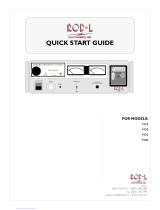 ROD-L M30 Quick start guide
ROD-L M30 Quick start guide
-
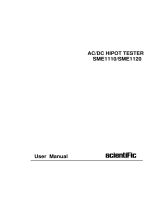 Scientific SME1120-4 Owner's manual
Scientific SME1120-4 Owner's manual
-
 Cirris Easy-Touch Pro Getting Started Manual
Cirris Easy-Touch Pro Getting Started Manual
-
dewenwils HOMT11B User manual
-
SCI 440 Series User guide
-
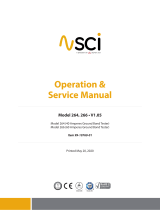 IKONIX SCi 260 Series Operation & Service Manual
IKONIX SCi 260 Series Operation & Service Manual
-
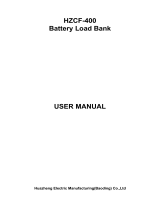 Huazheng HZCF-400 Battery Load Bank User manual
Huazheng HZCF-400 Battery Load Bank User manual
-
GW Instek GPT-9600 Quick start guide
-
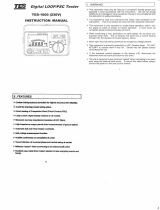 MRC TES-1800 User manual
MRC TES-1800 User manual
-
Huazheng HZ-3320B User manual







































































